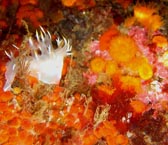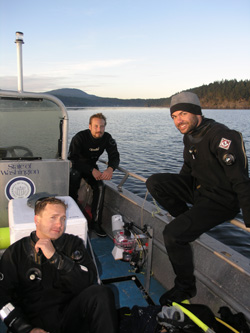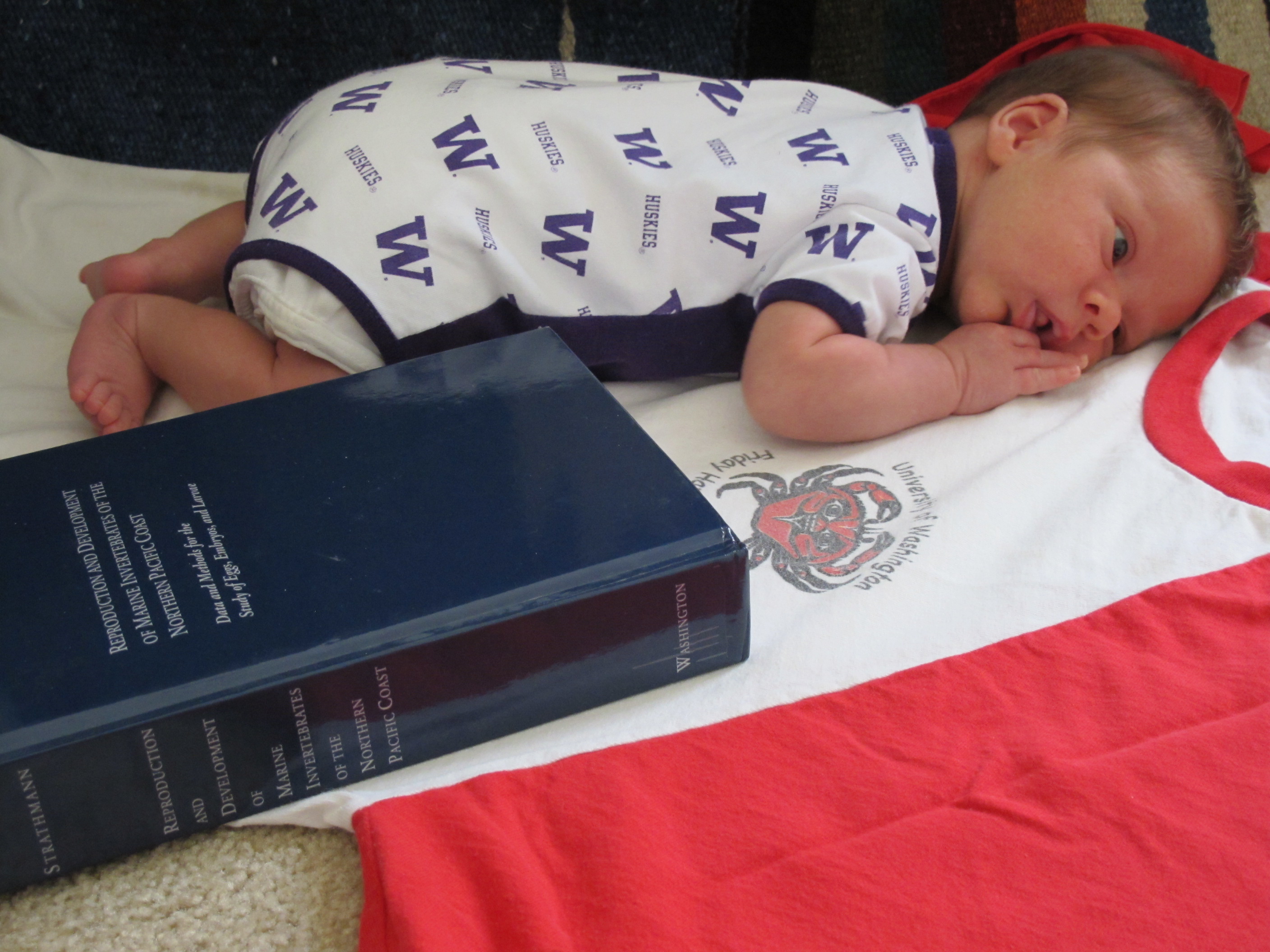Species, structure, and scale in the subtidal Salish Sea
by Robin Elahi, PhD
Why are those animals there, but not here? Why were there few plants before, but many now? At its core, the study of ecology seeks to answer these types of fundamental questions. Their importance is obvious – humans are part and parcel of the vast network of species on the planet, and we have depended on other organisms for food, shelter, medicine, culture and commerce throughout history. Though these questions are simple, the answers are often complex because many different processes dictate the assembly and structure of communities. These processes might be very localized, and happen over a short period of time – like a sea urchin eating a sea squirt. Other processes occur over larger areas, and over longer time scales – like the rapid increase in seawater temperatures all across the globe over the past fifty years.
Under the advisement of Ken Sebens at Friday Harbor Labs, I completed a dissertation (December 2012) on the ecology of underwater rock wall communities. My overarching goal was to describe broad patterns of subtidal biodiversity, and identify the causes and consequences of those patterns. I used both intensive, small-scale experimentation to pinpoint specific mechanisms and larger-scale surveys to interpret the importance of less easily manipulated processes. Specifically, I investigated the roles of grazing, water flow, and thirty years of temporal variation in these Salish Sea benthic communities.

In one field experiment, I learned that sea urchins prey upon assemblages dominated by sea squirts, and may avoid high-diversity assemblages. Furthermore, urchins facilitate other grazers, especially chitons. In a second field experiment, I showed that urchins and chitons can serve a redundant role (the maintenance of available space) in the community, thus providing a form of biological ‘insurance.’ To place the local-scale experiments into a broader geographic context, I quantified the effect of oceanographic (10 – 100km) variation on the diversity of rock wall communities. The greatest variation in diversity corresponded with distinct bodies of water that exhibited strong currents (Haro Strait, San Juan Channel, Rosario Strait) versus weak currents (East Sound, Lopez Sound, Hood Canal). Lastly, I wanted to know whether today’s rock wall communities have changed over the past three decades. Using historical photographs of rock walls around the corner from the FHL director’s house (taken by former UW graduate student Charles Birkeland), I was surprised to learn that the benthic community, overall, has not changed appreciably in three decades despite changes in seawater temperature and chemistry. However, our local coral species is now smaller, and grows more slowly, than it did in the 1970’s.
 Ready for a research dive! From left to right: Tim Dwyer, Ross Whippo, and Robin Elahi. Photo by Megan Mach.
Ready for a research dive! From left to right: Tim Dwyer, Ross Whippo, and Robin Elahi. Photo by Megan Mach. All of this research was made possible by FHL’s fantastic diving and boating facilities, and all of the staff that grease the wheels, so to speak – including Fred Ellis, Pema Kitaeff, and Kristy Kull. Diving and living in the San Juans for the better part of six years was incredible, and it was sad to leave Washington so soon after I graduated. Fortunately, I left with my FHL sweetheart, Megan Mach (also a newly minted PhD!). We moved to another spectacular marine hub, the Monterey Bay peninsula, which lessened the blow of our departure from the Pacific Northwest.
I just finished teaching my first full semester course this spring at California State University, Monterey Bay. As an instructor of Ecology, I explored the local terrestrial and marine habitats with my students, and my approach towards in-class activities was shaped strongly by two years of GK-12 teaching experience, including one at Friday Harbor High School. It was an intense, but rewarding, semester! Now I look forward to January 2014, when I start a two-year National Science Foundation postdoctoral fellowship. Together with mentors at the University of British Columbia (Mary O’Connor, Rebecca Tyson) and Hopkins Marine Station (Giulio De Leo, Fio Micheli), I will develop population models integrating the theoretical effects of temperature in the context of invertebrate life cycles. These models will then be applied to ecologically and commercially important marine species, including sea urchins, abalone, and corals. This theoretical approach should aid in identifying potential outcomes of climate change on marine populations, and provide a set of testable predictions for future experiments.
In the meantime, I have started another ‘project’, and have joined a new ‘society’, that will keep me busy before (and long after) I begin my post-doc. I am the proud new father of a baby boy named Theo! He enjoys long naps, frequent meals, and strolls along the beach. And I can’t wait to bring him to FHL.




